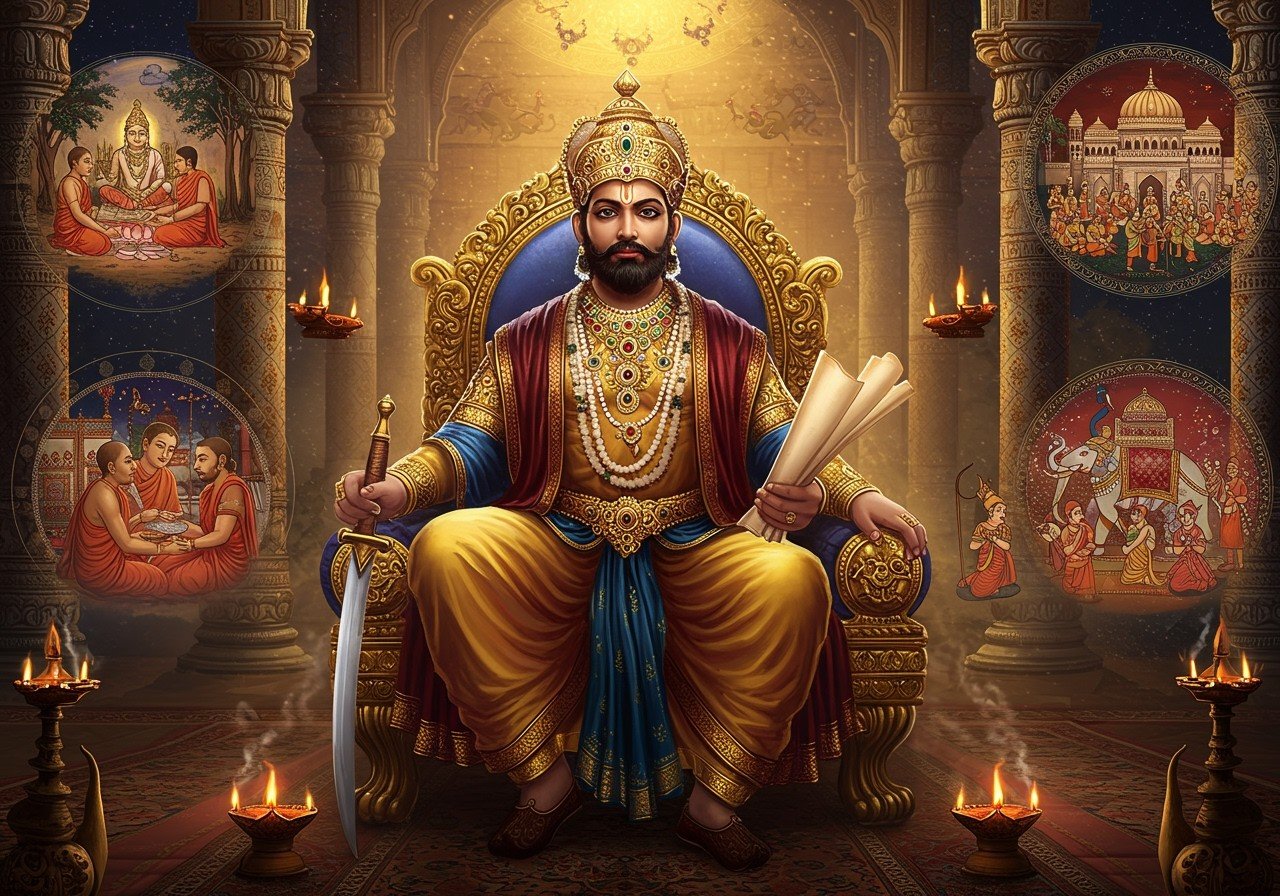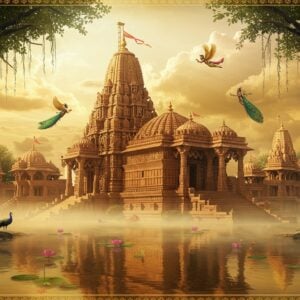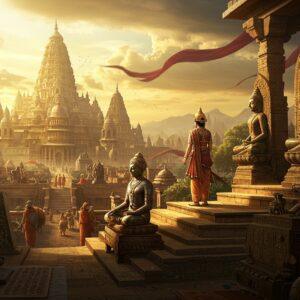
King Harsha Vardhana’s reign (606-647 CE) stands as a significant period in Indian history, marked by notable cultural and political achievements. This exploration delves into his rise to power, administrative strategies, military triumphs, and the enduring legacy he left behind. Understanding Harsha’s era offers valuable insights into the socio-political dynamics of ancient India.
Background and Early Life
Born into the Vardhana dynasty in Thanesar, Harsha’s early life revolved around education and leadership training, significantly influenced by his brother, Rajyavardhana. Northern India during his youth was a volatile landscape of constant warfare and administrative complexities. This tumultuous environment molded Harsha into a strategic thinker, equipping him for his future role as a ruler.
Ascension to the Throne
Harsha Vardhana ascended to the throne in 606 CE following Rajyavardhana’s assassination. Driven by vengeance, he initially faced challenges consolidating his power. He skillfully employed diplomacy to secure support from neighboring kingdoms, while his sister, Rajyashri, played a pivotal role in stabilizing his reign during these formative years. Navigating these trials honed Harsha’s leadership, demonstrating his adaptability and effectiveness.
Harsha Charita: A Chronicle of His Reign
Banabhatta’s Harsha Charita, a biographical account, is crucial for understanding Harsha’s rule. This text vividly depicts Harsha’s character, policies, and accomplishments through detailed narratives. It highlights his diplomatic finesse and military prowess, offering invaluable historical perspectives. Banabhatta’s literary style, combined with the historical context, enriches the narrative of Harsha’s reign.
Military Campaigns and Conquests
Harsha Vardhana’s military campaigns focused on expanding his kingdom across northern India. His battles against Bengal, Orissa, and the Deccan are particularly noteworthy. The Battle of Kannauj and his victory over the Gauda king, Shashanka, represent significant milestones. Harsha strategically combined diplomacy with military tactics to achieve his conquests.
Administration and Governance
Harsha Vardhana prioritized centralized authority and a stable government. He emphasized public welfare through infrastructure projects like roads, hospitals, and educational institutions. His taxation policies aimed to stimulate trade and commerce, while religious assemblies, such as the one at Kannauj, held significant importance during his reign. Harsha’s patronage of arts and literature further contributed to cultural flourishing.
Defeat and Decline
Despite his successes, Harsha suffered a defeat against Pulakesin II, the Chalukya king of the Deccan, in the Battle of Narmada. This setback exposed strategic vulnerabilities and impacted his political power and territorial control. The defeat led to a decline in administrative efficiency, increased internal strife, and further weakening due to external invasions and economic challenges.
Legacy and Cultural Impact
Harsha Vardhana’s reign left an enduring mark on Indian history. His contributions to art, literature, and religion are particularly significant. His patronage of Buddhism influenced India’s religious landscape, while his administrative reforms had lasting impacts on northern India. Harsha’s era significantly shaped the socio-political structure and continues to be commemorated through historical accounts and folklore.
FAQs on King Harsha Vardhana’s Reign
Who authored Harsha Charita? It was written by Banabhatta, Harsha Vardhana’s court poet.
When did Harsha become king? He ascended the throne in 606 CE after his brother’s death.
Who defeated Harsha? He was defeated by Pulakesin II of the Chalukya dynasty.
What was Harsha’s capital? His capital was Kannauj.
Which religion did Harsha promote? Initially a Hindu, he later embraced and championed Buddhism.
How vast was Harsha’s empire? It spanned northern India, encompassing regions like Punjab, Uttar Pradesh, Bihar, and Bengal.
What distinguished Harsha’s rule? His robust administration, patronage of the arts, and promotion of Buddhism.
Did Harsha write any literary works? Yes, he penned three Sanskrit plays: Nagananda, Ratnavali, and Priyadarshika.
Experience the Richness of Indian Culture at Poojn.in
Just as King Harsha Vardhana championed cultural and religious practices, you too can connect with India’s rich heritage through Poojn.in. We offer a vast collection of authentic puja items, handcrafted idols, spiritual books, and much more, allowing you to embrace and celebrate the traditions that flourished during Harsha’s era and continue to resonate today. Explore our diverse range of products and bring the essence of Indian culture into your home. Discover exquisite murtis and premium quality puja samagri to enhance your spiritual practices.
Our offerings include:
- Sacred texts and religious books: Delve deeper into Indian history, philosophy, and spirituality with our curated collection of books, similar to those cherished during King Harsha’s reign. Expand your knowledge and understanding of ancient Indian traditions.
- Traditional puja thalis and accessories: Enhance your daily worship rituals with authentic puja thalis and accessories, crafted with the same reverence and attention to detail as those used in ancient temples. Experience a deeper connection to your spiritual practice.


